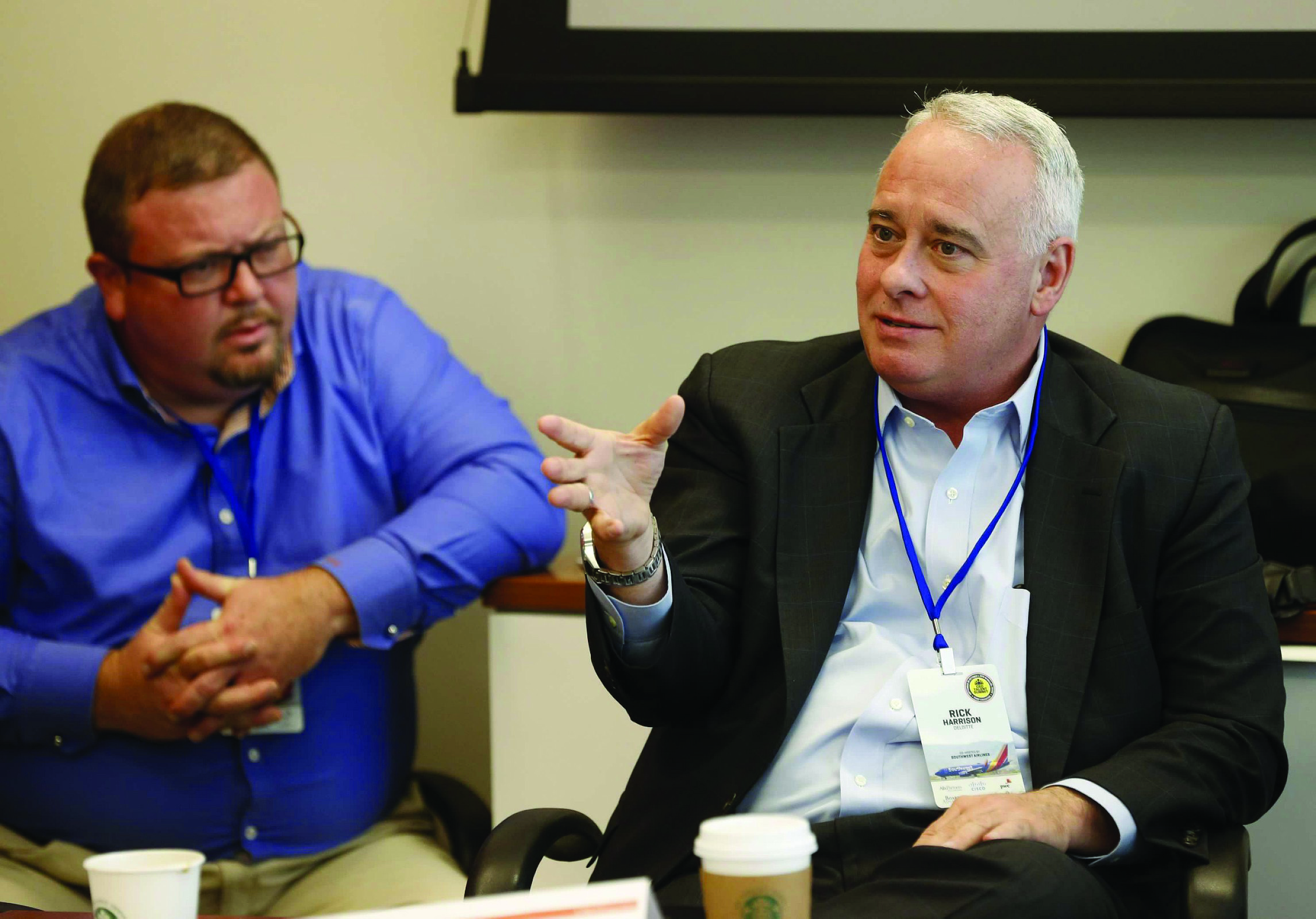
Enzen Global Limited’s strategy is to take experienced people who have spent 25 or 30 years in the energy sector and blend them with recent graduates who are well versed in social media and have a different way of viewing things, noted Kutty Prabakaran, managing director. “When you blend them, you get unique thinking and that makes a big difference.” The company also moves employees around “to recycle people,” which not only develops high potentials, but keeps top talent engaged, challenged and passionate about coming to work, he said.
Tools for a New Age
Cisco has reinvented itself as a company at least five times, said Beliveau-Dunn, in part owing to having created a collaborative learning environment in which people are given information about and access to other employees who may be able to help them do their jobs better.
“We have this ability to connect people to others on the fly,” said Beliveau-Dunn. “By providing vehicles to collaborate, co-create and innovate together over digital or mobile platforms, we’ve been able to really change the paradigm.” Cisco can, for example, easily “rescale” talent, or move players around into projects where they can be most useful and connect them to groups that need their skills. “Rescaling is something that happens 80 percent of the day,” she added.
That agility allows the company to make strategic adjustments as needed and to co-innovate with partners and customers to outpace the competition. “In the days of such change, it’s really going to come down to the company that plays the best team sport of innovation winning—particularly if you can take that innovation and clear a path towards execution,” asserted Beliveau-Dunn.
The right technology and tools help move companies down that path. Deloitte, for example, has a knowledge repository that allows people managing projects to find colleagues who have managed similar projects successfully. By letting people drill down into the specifics of a capability area, they can find exactly the skills they need, explained Rick Harrison, national managing principal with Deloitte. “So someone might say, ‘We need some thought leadership development.’ And we have a whole service on leadership development, so you know exactly where to go for that.”
Companies are then making it easier for employees to communicate in virtual communities via chat and other open-communication technology. Once available only to deep-pocketed players, these tools can now be purchased off the shelf—or in the cloud—at a fraction of what they once cost. Scott Kinnaird, executive chairman of a la mode, pointed to inexpensive communication and
productivity software such as Slack that allow workers to connect virtually but feel as though they’re in the same room. “The tools that are built into Slack enable you to just type in ‘#groupmeeting,’ and then, suddenly, Google Hangout will fire up within the app. So you’re talking to people face-to-face.”
Mark Shlanta, CEO of SDN Communications, pointed out that not every geographic region is ready for newer methods of communication. SDN Communications employs 180 people, drawn from a talent pool made up primarily of South Dakota rural communities with populations of fewer than 2,000. “So when you start doing something like chat, they’re like, ‘Wow. How do you use that in the organization?’” said Shlanta. “So you have to kind of wade into these things a little bit differently.”

Chief Executive Group exists to improve the performance of U.S. CEOs, senior executives and public-company directors, helping you grow your companies, build your communities and strengthen society. Learn more at chiefexecutivegroup.com.
0

1:00 - 5:00 pm
Over 70% of Executives Surveyed Agree: Many Strategic Planning Efforts Lack Systematic Approach Tips for Enhancing Your Strategic Planning Process
Executives expressed frustration with their current strategic planning process. Issues include:
Steve Rutan and Denise Harrison have put together an afternoon workshop that will provide the tools you need to address these concerns. They have worked with hundreds of executives to develop a systematic approach that will enable your team to make better decisions during strategic planning. Steve and Denise will walk you through exercises for prioritizing your lists and steps that will reset and reinvigorate your process. This will be a hands-on workshop that will enable you to think about your business as you use the tools that are being presented. If you are ready for a Strategic Planning tune-up, select this workshop in your registration form. The additional fee of $695 will be added to your total.

2:00 - 5:00 pm
Female leaders face the same issues all leaders do, but they often face additional challenges too. In this peer session, we will facilitate a discussion of best practices and how to overcome common barriers to help women leaders be more effective within and outside their organizations.
Limited space available.

10:30 - 5:00 pm
General’s Retreat at Hermitage Golf Course
Sponsored by UBS
General’s Retreat, built in 1986 with architect Gary Roger Baird, has been voted the “Best Golf Course in Nashville” and is a “must play” when visiting the Nashville, Tennessee area. With the beautiful setting along the Cumberland River, golfers of all capabilities will thoroughly enjoy the golf, scenery and hospitality.
The golf outing fee includes transportation to and from the hotel, greens/cart fees, use of practice facilities, and boxed lunch. The bus will leave the hotel at 10:30 am for a noon shotgun start and return to the hotel after the cocktail reception following the completion of the round.